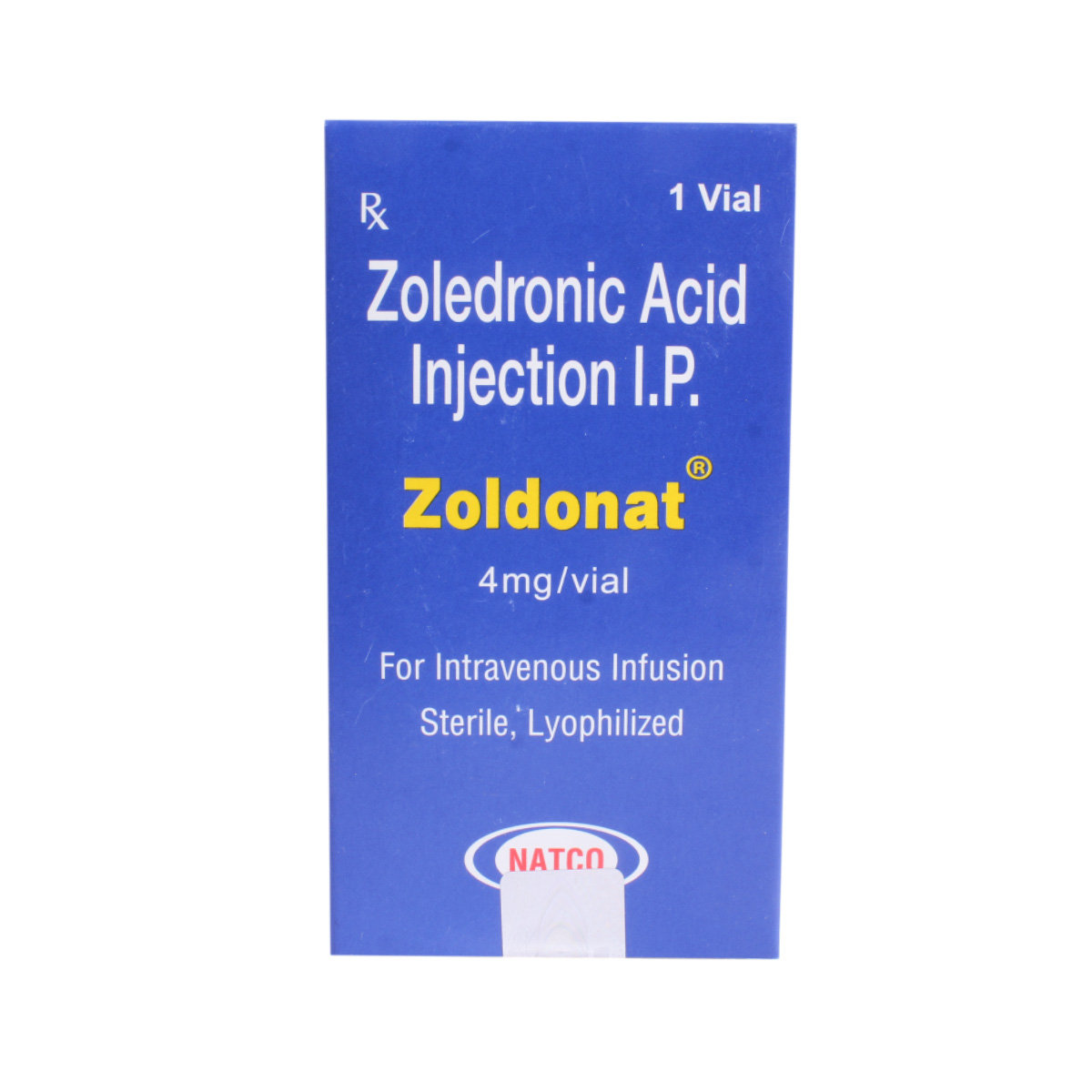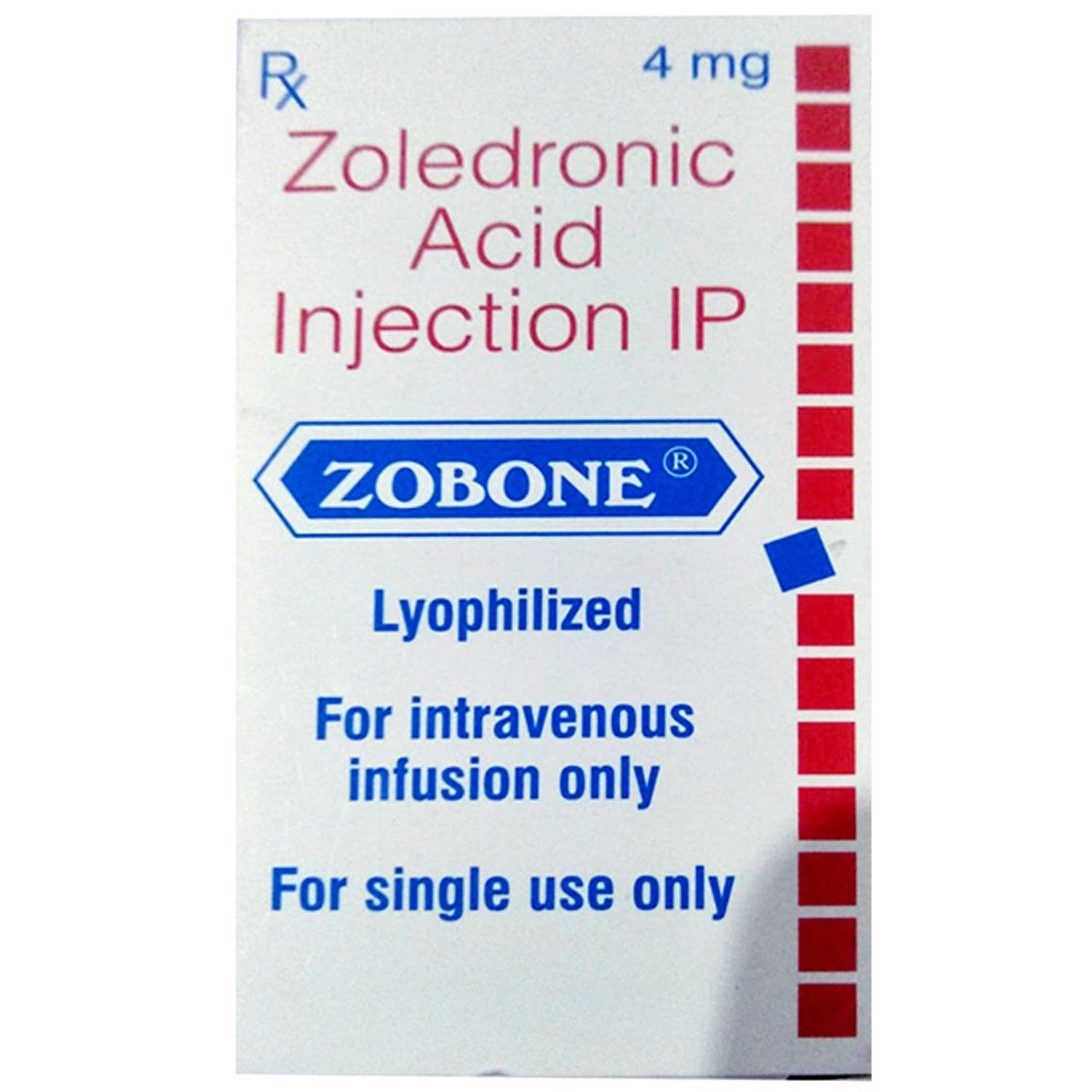Zolasta 4mg Injection
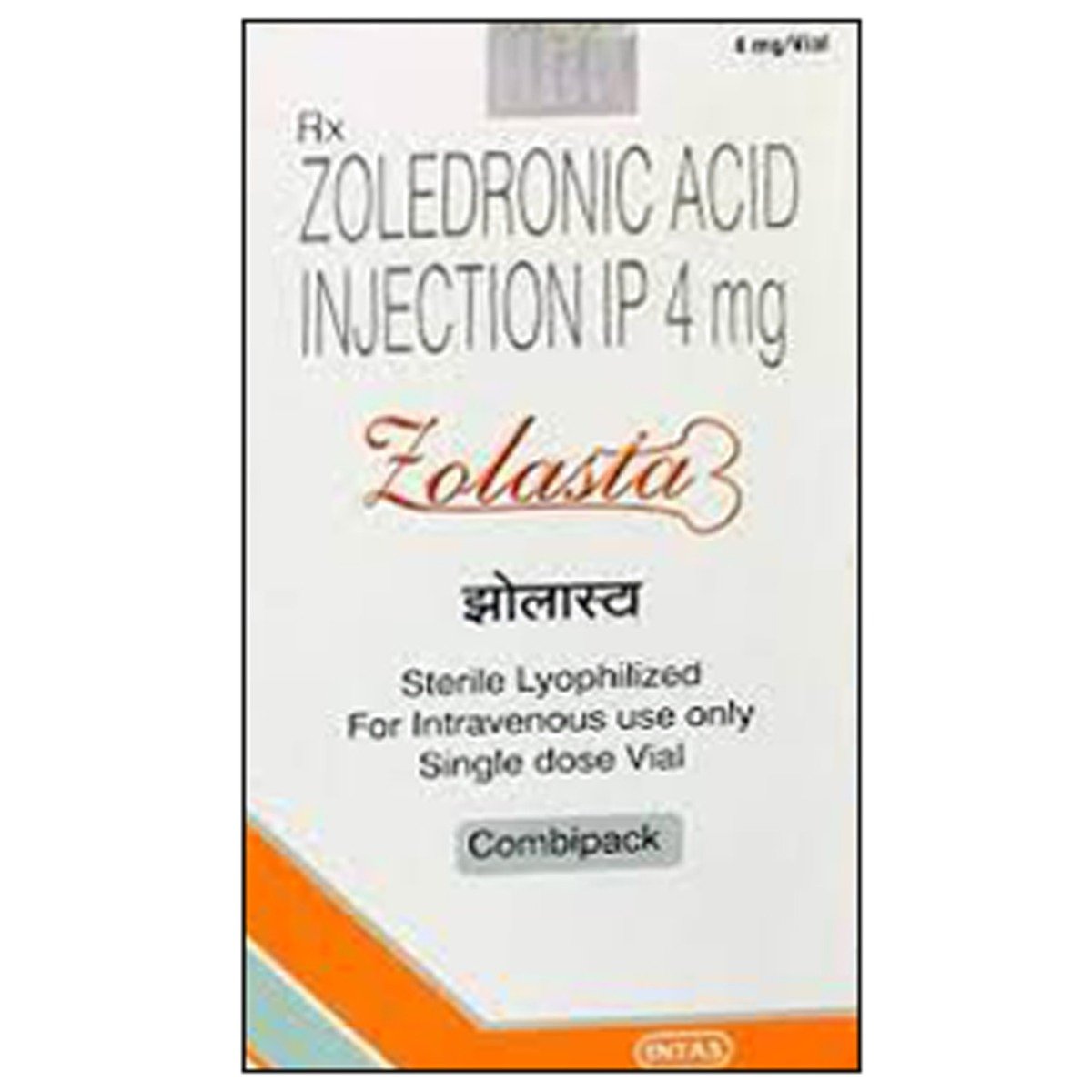
MRP ₹2511.5
(Inclusive of all Taxes)
₹376.7 Cashback (15%)
know your delivery time
Provide Delivery Location
Composition :
Manufacturer/Marketer :
Consume Type :
Expires on or after :
Return Policy :
NPPA :

Secure Payment

Trusted by 8 Crore Indians

Genuine Products
Therapeutic Class
Country of origin
Manufacturer/Marketer address
Author Details
We provide you with authentic, trustworthy and relevant information
Disclaimer
Alcohol
Safe if prescribed
Interaction of alcohol with Zolasta 4mg Injection is unknown. Please consult a doctor before consuming alcohol with Zolasta 4mg Injection.
Pregnancy
Consult your doctor
Zolasta 4mg Injection is a category D pregnancy drug and is not recommended for pregnant women as it may harm an unborn baby. Please consult a doctor if you are pregnant.
Breast Feeding
Consult your doctor
Zolasta 4mg Injection is contraindicated in breastfeeding mothers. Therefore, please consult a doctor if you are breastfeeding.
Driving
Safe if prescribed
Zolasta 4mg Injection may cause dizziness. Therefore, avoid driving or operating machinery if you feel dizzy after taking Zolasta 4mg Injection.
Liver
Consult your doctor
Take Zolasta 4mg Injection with caution, especially if you have a history of Liver diseases/conditions. The dose may be adjusted by your doctor as required.
Kidney
Consult your doctor
Take Zolasta 4mg Injection with caution, especially if you have a history of Kidney diseases/conditions. The dose may be adjusted by your doctor as required. Avoid taking Zolasta 4mg Injection if you have severe kidney problems.
Children
Safe if prescribed
Zolasta 4mg Injection is not recommended for children below 18 years as the safety and effectiveness were not established.
Product Substitutes
Keep Refrigerated. Do not freeze.Prepaid payment required.
About Zolasta 4mg Injection
Zolasta 4mg Injection belongs to the class of medicines called 'bisphosphonates' used to treat osteoporosis (weak and brittle bones) caused by menopause or long-term steroid use. Zolasta 4mg Injection also treats Paget’s bone and high calcium levels caused by cancer. Osteoporosis is a bone disease that weakens and thins bones by decreasing bone density, common in post-menopausal women. As the density of bones decreases, they weaken and are more likely to break.
Zolasta 4mg Injection contains Zoledronic acid that works by binding to the bone tightly and preventing the removal of calcium by osteoclasts (a type of bone cell that destroys bone tissue). This prevents osteoclasts from breaking down the bone and keeps the bones strong and minimizes the risk of bones breaking.
A doctor or nurse will administer Zolasta 4mg Injection. In some cases, you may experience headache, fever, nausea, dizziness, vomiting, back pain, diarrhea, pain in the muscles, joints, or bones, swelling, or pain at the infusion site. Most of these side effects of Zolasta 4mg Injection do not require medical attention and gradually resolve over time. However, if the side effects persist or worsen, please consult your doctor.
If you are allergic to Zolasta 4mg Injection or any other medicines, please tell your doctor. Avoid taking Zolasta 4mg Injection if you are pregnant or breastfeeding and consult a doctor. Zolasta 4mg Injection is not recommended for children below 18 years as the safety and effectiveness were not established. Avoid taking Zolasta 4mg Injection if you have hypocalcemia (low calcium levels in the blood) and severe kidney problems. Drive only if you are alert as Zolasta 4mg Injection may cause dizziness. Zolasta 4mg Injection may cause osteonecrosis of the jaw (ONJ) in some patients. Therefore, if you experience any problems with teeth or mouth such as loose teeth, swelling or pain, non-healing of sores, or discharge, consult your doctor and dentist as these might be signs of osteonecrosis of the jaw.
Uses of Zolasta 4mg Injection
Medicinal Benefits Mweb
Key Benefits
Zolasta 4mg Injection contains Zoledronic acid used to treat postmenopausal osteoporosis, Paget’s disease, and hypercalcemia of malignancy (bone cancer in which excess of calcium exits). Zolasta 4mg Injection binds to the bone tightly and prevents calcium removal by osteoclasts (a type of bone cell that destroy bone tissue). This prevents osteoclasts from breaking down the bone, strengthening bones, and minimizing the risk of bones breaking. Also, Zolasta 4mg Injection may reduce calcium levels in the blood by preventing calcium reabsorption from bones to the blood. Thus, it helps in treating high calcium levels in the blood caused by cancer.
Directions for Use
Side Effects of Zolasta 4mg Injection
- Headache
- Fever
- Nausea
- Dizziness
- Vomiting
- Back pain
- Diarrhoea
- Flu-like symptoms (chills, tiredness, muscle, and joint pain)
- Pain in the muscles, joints, or bones
- Swelling or pain at the infusion site
Drug Warnings
If you are allergic to Zolasta 4mg Injection or any other medicines, please tell your doctor. Avoid taking Zolasta 4mg Injection if you are pregnant or breastfeeding and consult a doctor. Zolasta 4mg Injection is not recommended for children below 18 years as the safety and effectiveness were not established. Avoid taking Zolasta 4mg Injection if you have hypocalcemia (low calcium levels in the blood) and severe kidney problems. Drive only if you are alert as Zolasta 4mg Injection may cause dizziness. If you are not able to take daily calcium supplements, have had sections of the intestine or some or all of the parathyroid glands in the neck surgically removed, have cancer, gum disease, poor dental health, or planned tooth extraction or kidney problem, inform your doctor before taking Zolasta 4mg Injection. If you are a smoker, inform your doctor before receiving Zolasta 4mg Injection as it may increase the risk of dental problems. Zolasta 4mg Injection may cause osteonecrosis of the jaw (ONJ) in some patients. Therefore, if you experience any problems with teeth or mouth such as loose teeth, swelling or pain, non-healing of sores, or discharge, consult your doctor and dentist as these might be signs of osteonecrosis of the jaw. You are recommended to drink at least 2 glasses of fluids before and after treatment with Zolasta 4mg Injection as advised by your doctor to prevent dehydration. Take calcium and vitamin D supplements as prescribed by your doctor as Zolasta 4mg Injection may reduce calcium levels in the blood.
Drug-Drug Interactions
Drug-Drug Interactions
Login/Sign Up
Co-administration of Cidofovir and Zolasta 4mg Injection 10 ml can increase the risk of kidney problems.
How to manage the interaction:
Taking Cidofovir and Zolasta 4mg Injection 10 ml together is not recommended as it can lead to an interaction, it can be taken if advised by a doctor. However, if you experience any symptoms like nausea, vomiting, loss of hunger, increased or decreased urination, sudden weight gain or weight loss, fluid retention, swelling, shortness of breath, muscle cramps, tiredness, weakness, dizziness, confusion, and irregular heart rhythm, contact your doctor immediately. Do not discontinue any medications without consulting a doctor.
Taking Tacrolimus with Zolasta 4mg Injection 10 ml may increase risk of kidney problems.
How to manage the interaction:
Although taking Tacrolimus and Zolasta 4mg Injection 10 ml together can possibly result in an interaction, it can be taken if a doctor has prescribed it. However, consult the doctor immediately if you experience symptoms such as nausea, vomiting, loss of hunger, increased or decreased urination, sudden weight gain or weight loss, fluid retention, swelling, shortness of breath, muscle cramps, tiredness, weakness, dizziness, confusion, and irregular heart rhythm. Do not discontinue any medications without consulting a doctor.
Co-administration of Zolasta 4mg Injection 10 ml and Tenofovir alafenamide can increase the risk of kidney problems.
How to manage the interaction:
Taking Zolasta 4mg Injection 10 ml and Tenofovir alafenamide together can lead to an interaction, it can be taken if advised by a doctor. However, if you experience any symptoms like nausea, vomiting, loss of appetite, increased or decreased urination, sudden weight gain or weight loss, fluid retention, swelling, shortness of breath, bone pain, muscle cramps, tiredness, weakness, dizziness, confusion, and irregular heart rhythm, contact a doctor immediately. Do not discontinue any medications without consulting a doctor.
Co-administration of Zolasta 4mg Injection 10 ml (oral form) with Deferasirox can increase the risk of bleeding and ulcers in the stomach and intestines.
How to manage the interaction:
Although taking Zolasta 4mg Injection 10 ml and Deferasirox together can possibly result in an interaction, it can be taken if your doctor has prescribed it. However, if you experience nausea, vomiting, loss of appetite, increased or decreased urination, fluid retention, swelling, shortness of breath, bone pain, muscle cramps, tiredness, weakness, dizziness, confusion, or irregular heart rhythm, seek immediate medical attention. Drink plenty of water if you experience diarrhoea or vomiting while taking these medications, as dehydration can potentially affect the kidneys. Do not discontinue any medications without a doctor's advice.
Co-administration of Sirolimus and Zolasta 4mg Injection 10 ml can increase the risk or severity of kidney problems.
How to manage the interaction:
Taking Sirolimus and Zolasta 4mg Injection 10 ml together can lead to an interaction, but it can be taken if a doctor advises. However, if you experience any symptoms like nausea, vomiting, loss of appetite, increased or decreased urination, sudden weight gain or weight loss, fluid retention, swelling, shortness of breath, muscle cramps, tiredness, weakness, dizziness, confusion, and irregular heart rhythm, contact a doctor immediately. Do not discontinue any medications without consulting a doctor.
Co-administration of Human immunoglobulin with Zolasta 4mg Injection 10 ml, may raise the risk of kidney problems.
How to manage the interaction:
There may be a possibility of interaction between Human immunoglobulin and Zolasta 4mg Injection 10 ml, but it can be taken if prescribed by a doctor. However, if you experience nausea, vomiting, loss of appetite, increased or decreased urination, sudden weight gain or loss, fluid retention, swelling, shortness of breath, muscle cramps, tiredness, weakness, dizziness, confusion, or an irregular heart rhythm, consult a doctor. Do not discontinue any medications without consulting a doctor.
Drug-Food Interactions
Drug-Food Interactions
Login/Sign Up
Drug-Diseases Interactions
Drug-Diseases Interactions
Login/Sign Up
Drug-Drug Interactions Checker List
- GENTAMICIN
- FUROSEMIDE
Habit Forming
Special Advise
- A preventive dental check-up is required before using Zolasta 4mg Injection as it has been reported to cause osteonecrosis of the jaw.
- A blood test is recommended before taking each dose of Zolasta 4mg Injection to monitor kidney functioning.
- Regular intake of calcium and vitamin D may be recommended by your doctor while taking treatment with Zolasta 4mg Injection.
- While using Zolasta 4mg Injection, you may experience musculoskeletal pain, in this case, stop taking Zolasta 4mg Injection and consult a doctor.
Diet & Lifestyle Advise
- Include dairy products like milk, yoghurt, cheese, or milk-based custard in your diet.
- Eat daily a serving of broccoli, cabbage, bok choy (Chinese white cabbage), spinach, and other green leafy vegetables.
- Snack on calcium-rich nuts like Brazil nuts or almonds.
- Sprinkle sesame seeds over your food, vegetables, and salads. Sesame seeds are high in calcium.
- Avoid or reduce the intake of caffeine, soft drinks, and alcohol that inhibit calcium absorption.
- Replace the meat with tofu or tempeh for extra calcium in your food.
All Substitutes & Brand Comparisons
RX
Out of StockDrocid 4 mg Infusion 100 ml
Otsuka Pharmaceuticals Pvt Ltd
₹2499
(₹24.99/ 1ml)
88% CHEAPERRX
Osteomet 4Mg Inj
Neon Laboratories Ltd
₹519.5
(₹467.6 per unit)
106% COSTLIERRX
Out of StockAlzic 4mg Injection
Adley Formulations
₹730
(₹657.0 per unit)
190% COSTLIER

Have a query?
Buy best Orthopedics products by
Sun Pharmaceutical Industries Ltd
Cipla Ltd
Lupin Ltd
Intas Pharmaceuticals Ltd
Alkem Laboratories Ltd
Abbott India Ltd
Zydus Healthcare Ltd
Zydus Cadila
Torrent Pharmaceuticals Ltd
Ipca Laboratories Ltd
Macleods Pharmaceuticals Ltd
Ajanta Pharma Ltd
Dr Reddy's Laboratories Ltd
Glenmark Pharmaceuticals Ltd
Vasu Organics Pvt Ltd
Hetero Healthcare Pvt Ltd
Leeford Healthcare Ltd
Wallace Pharmaceuticals Pvt Ltd
Emcure Pharmaceuticals Ltd
Msn Laboratories Pvt Ltd
Overseas Health Care Pvt Ltd
Aar Ess Remedies Pvt Ltd
Alembic Pharmaceuticals Ltd
Cadila Healthcare Ltd
Chemo Healthcare Pvt Ltd
Corona Remedies Pvt Ltd
East West Pharma India Pvt Ltd
Eleadora Pharma
GlaxoSmithKline Pharmaceuticals Ltd
Inga Laboratories Pvt Ltd
Mankind Pharma Pvt Ltd
Medsol India Overseas Pvt Ltd
Micro Labs Ltd
Natco Pharma Ltd
Olcare Laboratories Pvt Ltd
Pharmed Ltd
Pulse Pharmaceuticals
Synovion Laboratories Pvt Ltd
Talent India Pvt Ltd
Virchow Biotech Pvt Ltd
Akumentis Healthcare Ltd
Ankaa Pharmaceutical
Bioelite Lifesciences Pvt Ltd
Blisson Mediplus Pvt Ltd
Cell Salve Pharmaceutical
Dolvis Bio Pharma Pvt Ltd
Eins Pharmaceuticals
Genesis Biotech
La Renon Healthcare Pvt Ltd
Neon Laboratories Ltd
Novartis India Ltd
Panacea Biotec Ltd
Pfizer Ltd
Prevego Healthcare & Research Pvt Ltd
Ronyd Healthcare Pvt Ltd
Steris Healthcare
Sundyota Numandis Pharmaceuticals Pvt Ltd
Actus Health Care
Alna Biotech Pvt Ltd
Alteus Biogenics Pvt Ltd
Anthem Bio Pharma
Aten Remedies Pvt Ltd
Athens Labs Ltd
Aureate Healthcare
Aurolab
Avrohn Pharma (I) Ltd
Biorange Biologicals Pvt Ltd
Biorex Healthcare Pvt Ltd
CMG Biotech Pvt Ltd
Canixa Life Sciences Pvt Ltd
Celebrity Biopharma Ltd
Celera Healthcare Pvt Ltd
Celon Laboratories Pvt Ltd
Comed Chemicals Ltd
Cyrus Remedies Pvt Ltd
Dru Pharma Pvt Ltd
Edura Pharmaceuticals Pvt Ltd
Elder Pharmaceuticals Ltd
Energize Pharmaceuticals (P) Ltd
Fibovil Pharmaceuticals Pvt Ltd
Goddres Pharmaceuticals Pvt Ltd
Gufic Bioscience Ltd
Hiilsen Life Sciences Pvt Ltd
Iifa Healthcare
Intra Labs India Pvt Ltd
Jagsonpal Pharmaceuticals Ltd
Krishgir Pharmaceuticals Pvt Ltd
Lg Life Sciences India Pvt Ltd
Mastro Biologicals Pvt Ltd
Maverick Pharma Pvt Ltd
Medicure Life Sciences Pvt Ltd
Medieos Life Sciences Llp
Medley Pharmaceuticals Ltd
Meyer Organics Pvt Ltd
Organic Pharmaceuticals Pvt Ltd
Qurewell Health Science Pvt Ltd
R B Pharmaceuticals
RPG Life Sciences Ltd
Ravinor Lifesciences
Regenix Drugs Ltd




